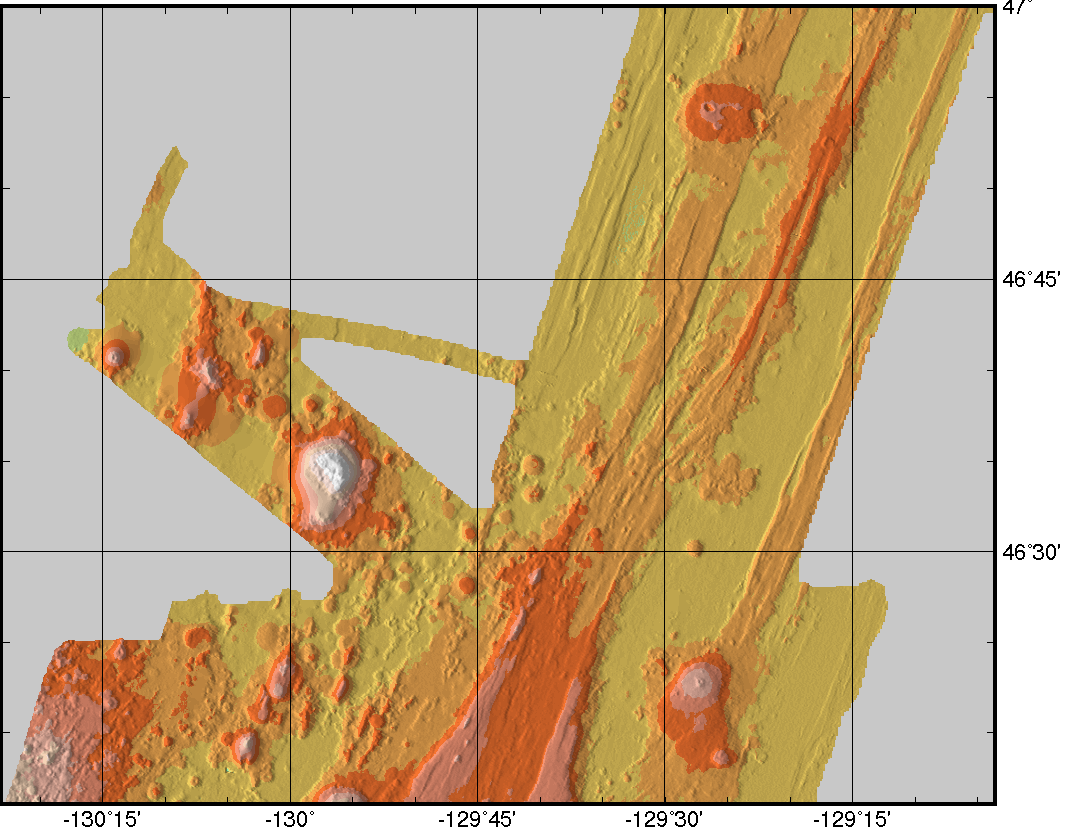Zero Age Magnetic Field Studies
Zero-age magnetic field studies have focused on the 1993 eruption of a lava flow on the Juan de Fuca Ridge in a joint study between University of Washington, NOAA and WHOI. Several cruises have visited the lava flow site since the original eruption July 1993 to map and monitor the changes in the flow and its physical properties. The Coaxial ridge segment of the Juan de Fuca is also where we have tested the autonomous underwater vehicle technology currently under development at Woods Hole Oceanographic Institution.
Autonomous Benthic Explorer (ABE) 1995 Survey and Results
Autonomous Benthic Explorer (ABE) 1996 Survey and Results
THE COAXIAL PROJECT
In 1993 T-phase earthquake monitoring located a swarm of earthquakes centered over the CoAxial ridge segment on the central Juan de Fuca Ridge in the northeast Pacific. Over a two day period these earthquakes migrated northwards approx. 40 km before abruptly terminating. Research vessels quick to the scene noted water column anomalies and deeptow camera studies by the Canadian ROV ROPOS discovered evidence of an extremely recent seafloor lava eruption at 46° 31' North.
In 1993 approximately 3 months after the lava flow eruption, the deep submersible ALVIN visited the new lava flow (Click here for map) to carry out in situ sampling and mapping including magnetic measurements. See the Special Issue of Geophysical Research Letters, vol. 22, 1995 for a number of papers dealing with the 1993 Coaxial eruption event.
As far as magnetics is concerned, the opportunity to collect essentially dated zero-age rock samples from the seafloor was very exciting. A number of questions exist about the decay in magnetization with age, the alteration of crustal magnetization and the apparent large variation in magnetization of young midocean ridge basalts. The CoAxial lava flow provides the opportunity to establish a baseline temporal study of the magnetization of seafloor basalts. Both rock samples and magnetic field studies have been carried out to date. I have been responsible for the magnetic field measurements made so far over the coaxial flow. Curiously the lava flow exhibits a very strong magnetic anomaly with a clearly defined magnetic low or "notch" over the center of the flow. This notch is interpreted to be due to the presence of the feeder dike that fed the lava flow. It is not known whether this notch will disappear with time indicating a thermal effect was actively decreasing the rock magnetization or if the notch is permanent reflecting the reduced magnetization typically associated with dike rocks in comparison with highly magnetized extrusive lavas.
Rock samples also indicate that the lava flow is highly magnetized (75 A/m) almost 2 to 3 times the surrounding lavas (25 A/m) upon which this new lava rests. Whether these lavas will decay rapidly with age is the subject of an ongoing study with Dr. Paul Johnson or the University of Washington.
